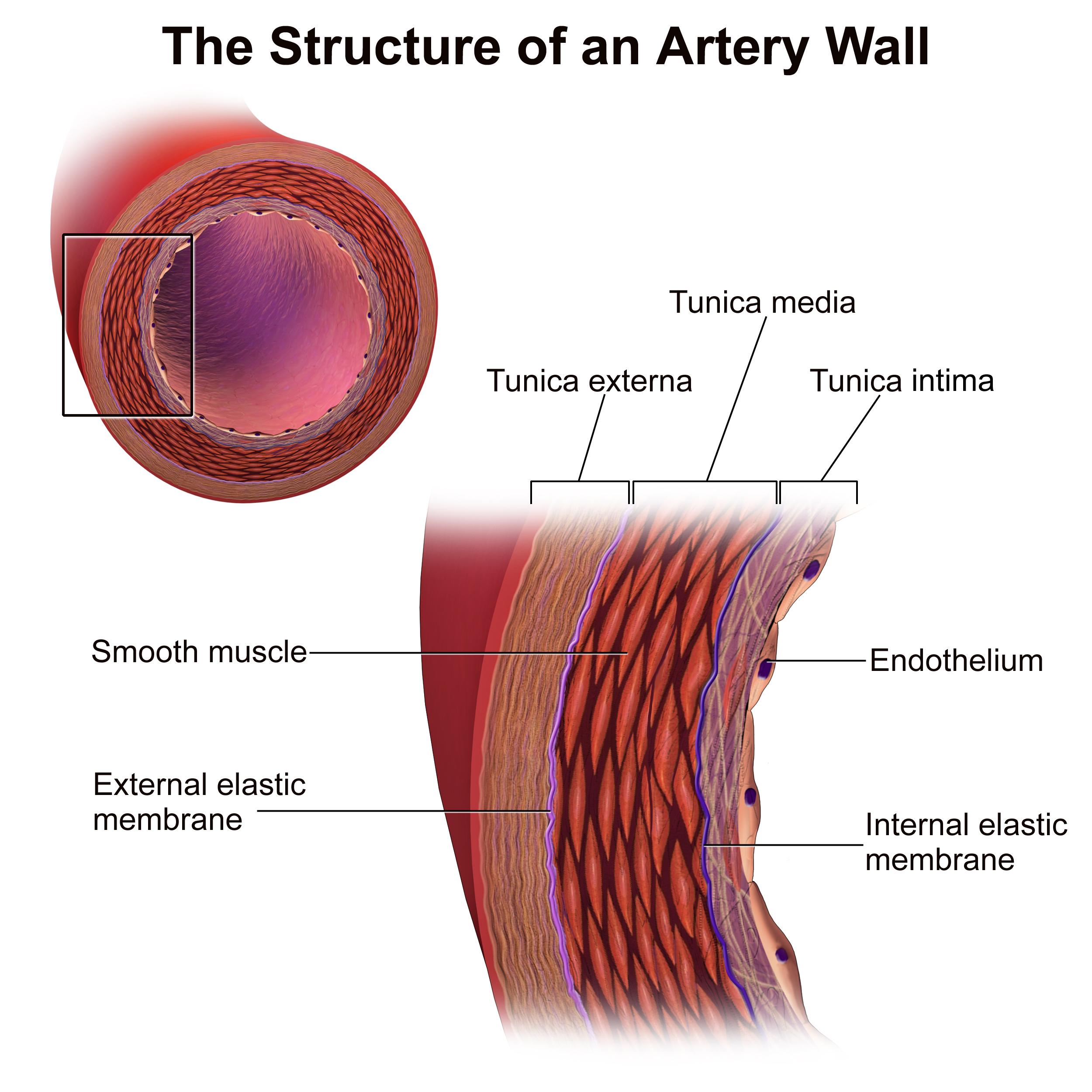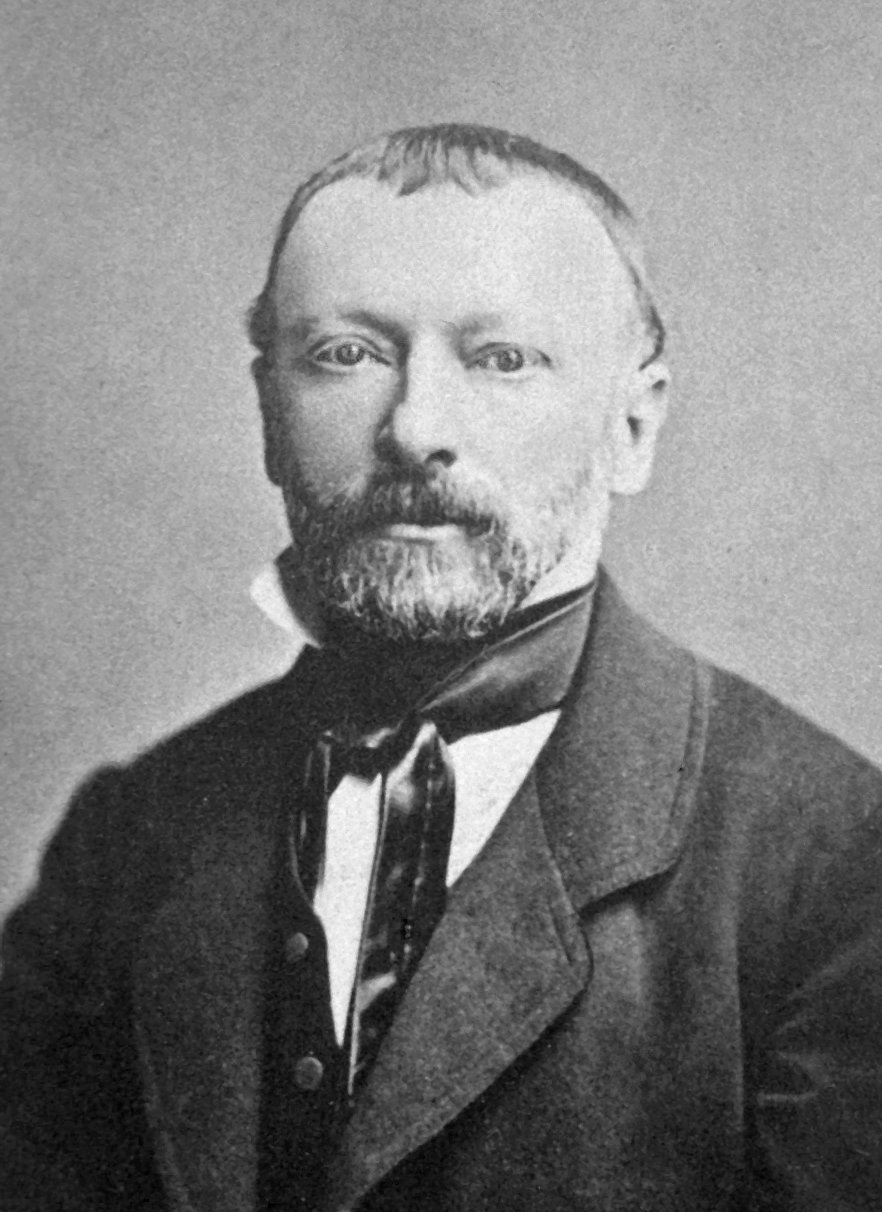|
Mayer Waves
Mayer waves are cyclic changes or ''waves'' in arterial blood pressure brought about by oscillations in baroreceptor and chemoreceptor reflex control systems. The waves are seen both in the ECG and in continuous blood pressure curves and have a frequency about 0.1 Hz (10-second waves). These waves were originally described by Siegmund Mayer, Ewald Hering and Ludwig Traube hence originally called "Traube–Hering–Mayer waves". Mayer waves can be defined as arterial blood pressure (AP) oscillations at frequencies ''slower'' than respiratory frequency and which show the strongest, significant coherence (strength of linear coupling between fluctuations of two variables in the frequency domain) with efferent sympathetic nervous activity (SNA). In humans, AP oscillations which meet these properties have a characteristic frequency of approx. 0.1 Hz; 0.3 Hz in rabbits and 0.4 Hz in rats. The hemodynamic basis of Mayer waves are oscillations of the sympathetic vasom ... [...More Info...] [...Related Items...] OR: [Wikipedia] [Google] [Baidu] |
Artery
An artery (plural arteries) () is a blood vessel in humans and most animals that takes blood away from the heart to one or more parts of the body (tissues, lungs, brain etc.). Most arteries carry oxygenated blood; the two exceptions are the pulmonary and the umbilical arteries, which carry deoxygenated blood to the organs that oxygenate it (lungs and placenta, respectively). The effective arterial blood volume is that extracellular fluid which fills the arterial system. The arteries are part of the circulatory system, that is responsible for the delivery of oxygen and nutrients to all cells, as well as the removal of carbon dioxide and waste products, the maintenance of optimum blood pH, and the circulation of proteins and cells of the immune system. Arteries contrast with veins, which carry blood back towards the heart. Structure The anatomy of arteries can be separated into gross anatomy, at the macroscopic level, and microanatomy, which must be studied with a ... [...More Info...] [...Related Items...] OR: [Wikipedia] [Google] [Baidu] |
Blood Pressure
Blood pressure (BP) is the pressure of circulating blood against the walls of blood vessels. Most of this pressure results from the heart pumping blood through the circulatory system. When used without qualification, the term "blood pressure" refers to the pressure in the large arteries. Blood pressure is usually expressed in terms of the systolic pressure (maximum pressure during one heartbeat) over diastolic pressure (minimum pressure between two heartbeats) in the cardiac cycle. It is measured in millimeters of mercury (mmHg) above the surrounding atmospheric pressure. Blood pressure is one of the vital signs—together with respiratory rate, heart rate, oxygen saturation, and body temperature—that healthcare professionals use in evaluating a patient's health. Normal resting blood pressure, in an adult is approximately systolic over diastolic, denoted as "120/80 mmHg". Globally, the average blood pressure, age standardized, has remained about the sam ... [...More Info...] [...Related Items...] OR: [Wikipedia] [Google] [Baidu] |
Baroreceptor
Baroreceptors (or archaically, pressoreceptors) are sensors located in the carotid sinus (at the bifurcation of external and internal carotids) and in the aortic arch. They sense the blood pressure and relay the information to the brain, so that a proper blood pressure can be maintained. Baroreceptors are a type of mechanoreceptor sensory neuron that are excited by a stretch of the blood vessel. Thus, increases in the pressure of blood vessel triggers increased action potential generation rates and provides information to the central nervous system. This sensory information is used primarily in autonomic reflexes that in turn influence the heart cardiac output and vascular smooth muscle to influence vascular resistance. Baroreceptors act immediately as part of a negative feedback system called the baroreflex, as soon as there is a change from the usual mean arterial blood pressure, returning the pressure toward a normal level. These reflexes help regulate short-term blood pressu ... [...More Info...] [...Related Items...] OR: [Wikipedia] [Google] [Baidu] |
Chemoreceptor
A chemoreceptor, also known as chemosensor, is a specialized sensory receptor which transduces a chemical substance (endogenous or induced) to generate a biological signal. This signal may be in the form of an action potential, if the chemoreceptor is a neuron, or in the form of a neurotransmitter that can activate a nerve fiber if the chemoreceptor is a specialized cell, such as taste receptors, or an internal peripheral chemoreceptor, such as the carotid bodies. In physiology, a chemoreceptor detects changes in the normal environment, such as an increase in blood levels of carbon dioxide (hypercapnia) or a decrease in blood levels of oxygen (hypoxia), and transmits that information to the central nervous system which engages body responses to restore homeostasis. In bacteria, chemoreceptors are essential in the mediation of chemotaxis. Cellular chemoreceptors In prokaryotes Bacteria utilize complex long helical proteins as chemoreceptors, permitting signals to travel lo ... [...More Info...] [...Related Items...] OR: [Wikipedia] [Google] [Baidu] |
Siegmund Mayer
Siegmund Mayer (December 27, 1842 – September, 1910) was a German physiologist and histologist. Mayer was born in Bechtheim in Rhenish Hesse. He studied at the Universities of Heidelberg, Giessen and Tübingen, where in 1865 he obtained his doctorate. He subsequently worked with Hermann Ludwig Ferdinand von Helmholtz (1821–1894) in Heidelberg, Carl Friedrich Wilhelm Ludwig (1816–1895) and Julius Friedrich Cohnheim (1839–1884) in Leipzig, and with Ernst Wilhelm von Brücke (1819–1892) in Vienna. In 1869 he was habilitated for physiology at Vienna, and during the next year became Karl Ewald Konstantin Hering's assistant in Prague. In 1872 he became an associate professor and in 1887 a full professor. From 1880 he was director at the newly founded institute of histology. Mayer made several important contributions particularly concerning the physiology of the heart and vessels, respiration and intestines. He was one of the first to describe chromaffin cel ... [...More Info...] [...Related Items...] OR: [Wikipedia] [Google] [Baidu] |
Ludwig Traube (physician)
Ludwig Traube (12 January 1818 in Ratibor, Silesia, now Racibórz, Poland – 11 April 1876 in Berlin) was a German physician and co-founder of the experimental pathology in Germany. Biography Ludwig Traube was a son of a Jewish wine merchant. In 1835, at age 17, he left the gymnasium in Ratibor. He studied medicine in Breslau, Berlin and Vienna. Among his teachers were Jan Evangelista Purkyně (1787–1869) and Johannes Müller (1801–1858). Besides medicine, he was very active in philosophical studies; he especially appreciated the philosophy of Spinoza. In 1840 he received his doctorate („Specimina nonnulla physiologica et pathologica“), a work about pulmonary emphysema. Then he moved to Vienna to broaden his knowledge ( Baron Carl von Rokitansky (1804–1878) und Joseph Škoda (1805–1881). Since 1841 he was assistant of a physician for paupers in Berlin. In 1848 he became an unsalaried lecturer and in 1849 the first civilian assistant of Johann Lukas Schönlein (179 ... [...More Info...] [...Related Items...] OR: [Wikipedia] [Google] [Baidu] |
Heart Rate Variability
Heart rate variability (HRV) is the physiological phenomenon of variation in the time interval between heartbeats. It is measured by the variation in the beat-to-beat interval. Other terms used include: "cycle length variability", "R–R variability" (where R is a point corresponding to the peak of the QRS complex of the ECG wave; and RR is the interval between successive Rs), and "heart period variability". Methods used to detect beats include: ECG, blood pressure, ballistocardiograms, and the pulse wave signal derived from a photoplethysmograph (PPG). ECG is considered the gold standard for HRV measurement because it provides a direct reflection of cardiac electric activity. Clinical significance Reduced HRV has been shown to be a predictor of mortality after myocardial infarction although others have shown that the information in HRV relevant to acute myocardial infarction survival is fully contained in the mean heart rate. A range of other outcomes and conditions may al ... [...More Info...] [...Related Items...] OR: [Wikipedia] [Google] [Baidu] |
Hypertension
Hypertension (HTN or HT), also known as high blood pressure (HBP), is a long-term medical condition in which the blood pressure in the arteries is persistently elevated. High blood pressure usually does not cause symptoms. Long-term high blood pressure, however, is a major risk factor for stroke, coronary artery disease, heart failure, atrial fibrillation, peripheral arterial disease, vision loss, chronic kidney disease, and dementia. Hypertension is a major cause of premature death worldwide. High blood pressure is classified as primary (essential) hypertension or secondary hypertension. About 90–95% of cases are primary, defined as high blood pressure due to nonspecific lifestyle and genetic factors. Lifestyle factors that increase the risk include excess salt in the diet, excess body weight, smoking, and alcohol use. The remaining 5–10% of cases are categorized as secondary high blood pressure, defined as high blood pressure due to an identifiable cause ... [...More Info...] [...Related Items...] OR: [Wikipedia] [Google] [Baidu] |
American Journal Of Hypertension
The ''American Journal of Hypertension'' is a monthly peer-reviewed medical journal covering the field of cardiovascular medicine. It is published by Oxford University Press and the editor-in-chief is Ernesto L. Schiffrin (McGill University). According to the ''Journal Citation Reports'', the journal has a 2020 impact factor of 2.689. History It was established in 1985 as the ''Journal of Clinical Hypertension'', obtaining its current name in 1988. It was originally published quarterly by Elsevier, which transferred it to Nature Publishing Group beginning in 2008, but the journal is now published monthly by Oxford University Press, which acquired the journal in 2012. Oxford University Press' first issue of the journal was published in January 2013. From its founding until 2005, the journal was the official journal of the American Society of Hypertension. In 2005, led by editor Michael Alderman, the journal split from the society to become and independent entity due to what the jo ... [...More Info...] [...Related Items...] OR: [Wikipedia] [Google] [Baidu] |
Nature Publishing Group
Nature Portfolio (formerly known as Nature Publishing Group and Nature Research) is a division of the international scientific publishing company Springer Nature that publishes academic journals, magazines, online databases, and services in science and medicine. Nature Research's flagship publication is ''Nature'', a weekly multidisciplinary journal first published in 1869. It also publishes the ''Nature-''titled research journals, ''Nature Reviews'' journals (since 2000), society-owned academic journals, and a range of open access journals, including '' Scientific Reports'' and '' Nature Communications''. Springer Nature also publishes ''Scientific American'' in 16 languages, a magazine intended for the general public. In 2013, prior to the merger with Springer and the creation of Springer Nature, Nature Publishing Group's owner, Holtzbrinck Publishing Group, bought a controlling stake in Frontiers. Before Springer Nature was formed in 2015, Nature Research (as the Nature ... [...More Info...] [...Related Items...] OR: [Wikipedia] [Google] [Baidu] |
Vasomotion
Vasomotion is the spontaneous oscillation in tone of blood vessel walls, independent of heart beat, innervation or respiration. While vasomotion was first observed by Thomas Wharton Jones in 1852, the complete mechanisms responsible for its generation and its physiological importance remain to be elucidated, however several hypotheses have been put forth. Mechanism Intracellular calcium (Ca2+) concentration exhibits periodic oscillations in vascular smooth muscle cells. This is thought to result from Ca2+ release from intracellular stores, due to inositol triphosphate and ryanodine-sensitive channel activation. This activation has been shown to result in either Ca2+ "sparks", highly localized calcium increases, or "waves", global Ca2+ increase that propagates the length of the cell. To allow vasomotion to occur, synchronization must occur between the individual oscillations, resulting in global calcium synchronization and vessel tone oscillation.Nilsson H, Aalkjaer C. Vasomotion: ... [...More Info...] [...Related Items...] OR: [Wikipedia] [Google] [Baidu] |



